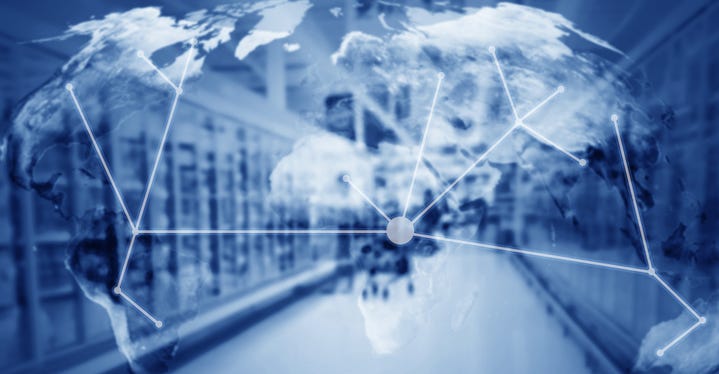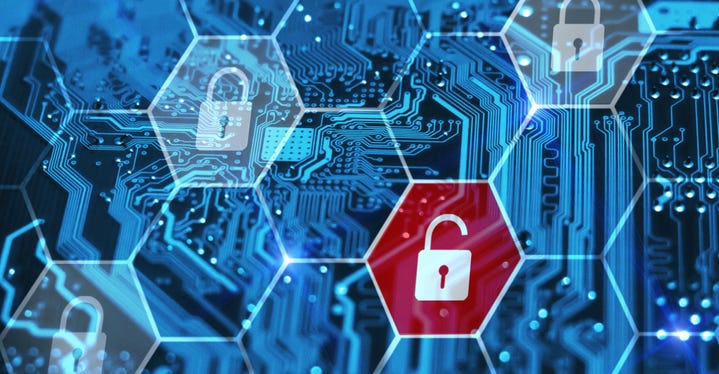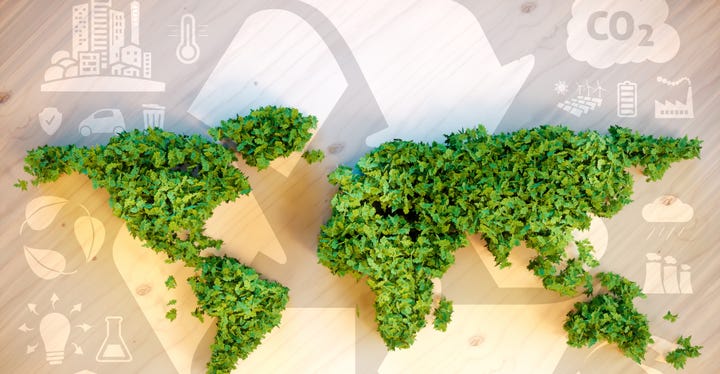COVID-19 spurred rapid technology adoption to cope with workforce, operational, and supply chain upsets. The benefits of new technologies — from wearable sensors to blockchain and IoT — are so compelling that companies are keeping them.

The packaging industry and supply chain experienced pandemic-accelerated shifts in 2020. Among the changes, companies moved digital adoption forward with incredible speed, according to recent data from McKinsey. In fact, many managed five year’s worth of innovation in less than two months.
Digital adoption wasn’t the only change to the industry. But in addition to changes in areas including labor distribution, supply chain sourcing, and packaging design, the addition of new automation solutions helped offset sales dips caused by the pandemic. But being highly agile raises questions such as: How fast is too fast? Was anything missed in the rush to remain competitive?
Here are three trends from the previous 12 months, along with possible pain points that may require a second look now.

1. Map supply chains to identify risk.
Supply chains became entangled in complications early in the pandemic. Unknown second- and third-tier suppliers, many in China, disrupted the flow of necessary stock. Companies trying to pinpoint disturbances faced opaque supply chains built to upscale efficiency and cost savings, but not transparency.
Now, many companies are bringing sourcing home from overseas, or reshoring, to better manage future problems. But this alone doesn’t mitigate risk.
This is not a new idea or a new problem. In fact, a 2013 Deloitte Global Supply Chain Risk Survey pointed out the difficulty in managing demand changes and margin erosion. The most significant risks related to supply chains, the survey revealed, were risks incurred “due to visibility shortages” in extended supply chains.
But there are ways around these shortcomings. Multi-tiered supply chain mapping allows the identification of and planning for vulnerabilities. This can expose problems hiding within a second- or third-tier relationship.
Manual mapping is labor-intensive. Another option uses blockchain technology. At first considered a synonym for the cryptocurrencies it sometimes supports, blockchain is actually a structured distributed data ledger system. Tampering with the ledger is impossible, even as it is widely shared and updated. Using blockchain for supply chain management offers end-to-end visibility and infers trust. It also allows end-users real-time opportunities to identify and respond to issues. Organizations should aim to build this kind of transparency whether supply chains remain global or move closer to home.

2. Keep workers safe and companies cyber-secure.
Everyone knows the term “social distancing” now. It’s hard to believe the safety buzzword was almost unknown before 2020. During the height of the pandemic, some packing and processing facilities became hotspots for the virus. Management teams worked to limit contact and maintain safe conditions for workers. Many turned to technology for the answer.
Sensor badges, biometric devices, and extra automation helped with these goals.
Workers shifted to remote locations when possible, using Internet of Things (IoT) connectivity to continue tasks. Such quick responses from the industry limited virus spread.
Now, many companies are keeping these measures in place. Automation that helps with worker spacing also increases productivity. Remote work offers the benefit of reduced office space requirements. Plus, studies show remote workers are happier, which reduces turnover. And sensor badges and biometric devices have the potential to enhance security, end time theft, and ensure task completion.
But these technologies also have their downsides. Edge devices or gateways for connecting legacy systems to industrial IoT (IIoT) networks also offer entry points to cybercriminals. Each connection must be updated and maintained to minimize cybersecurity risks. New automation systems are also connected to the IIoT and require security maintenance.
The same can be said for remote work technology. Many companies set up virtual private networks (VPNs) to encrypt and protect data through a sort of private network tunnel. Yet hackers have exploited VPNs in notable data breaches at companies including Target and Home Depot. Employees must be educated against installing malicious software or unknowingly exposing passwords.
Workers remaining on-site have used sensors to maintain social distance and to enable contact tracing. Biometric devices like wearable bands by firms like Nymi use individual biofeedback as a password. The devices offer a contactless way for workers to access systems while also authenticating location and identification.
Many workers, however, have voiced privacy concerns over biometrics, with one in five showing an unwillingness to wear them. Initial adoption may include pushback and distrust of the technology. Companies using such devices must take every precaution to maintain data security to counteract this. An opt-in policy for data collection should exist, with the option to erase collected personal data at any time.

3. Evaluate biosafety and sustainability.
While the last decade has seen brands around the world stepping up sustainability targets, the COVID-19 pandemic challenged those goals. Consumers, increasingly concerned about contamination, have turned to single-use plastics and prepackaged foods to calm safety concerns.
Meanwhile, the demand for recycled material decreased as much as 60%, including packaging from big companies such as Coca-Cola. As virgin plastic prices followed decreasing petrochemical costs, the recycled market felt the pinch. This has resulted in a glut of waste plastic with nowhere to land.
At the same time, consumers, especially Millennial consumers, claim sustainability is a value factor in their purchasing behavior. And yet Harvard Business Review states that “few consumers who report positive attitudes toward eco-friendly products actually follow through with their wallets. In fact, 65% say they prefer to buy sustainable brands but only 26% actually do so.” This disconnect implies sustainability is not the driving force it claims.
However, plastic waste in the Pacific Ocean continues to rise. And while disconnects may exist between behavior and attitudes, the sustainability question is deeply embedded in the mind of younger consumers. It’s not going away. As pandemic fears wane, sustainable targets should once again take on weight in industry decisions.
The world — and the packaging industry — is changing as a result of the pandemic. The good news, though, is that the industry is resilient. Now that the worst is (hopefully) behind us, it’s time to look back to gauge the value of decisions made in hard times, and to fine-tune those decisions for what the coming years will bring.
About the Author(s)
You May Also Like




